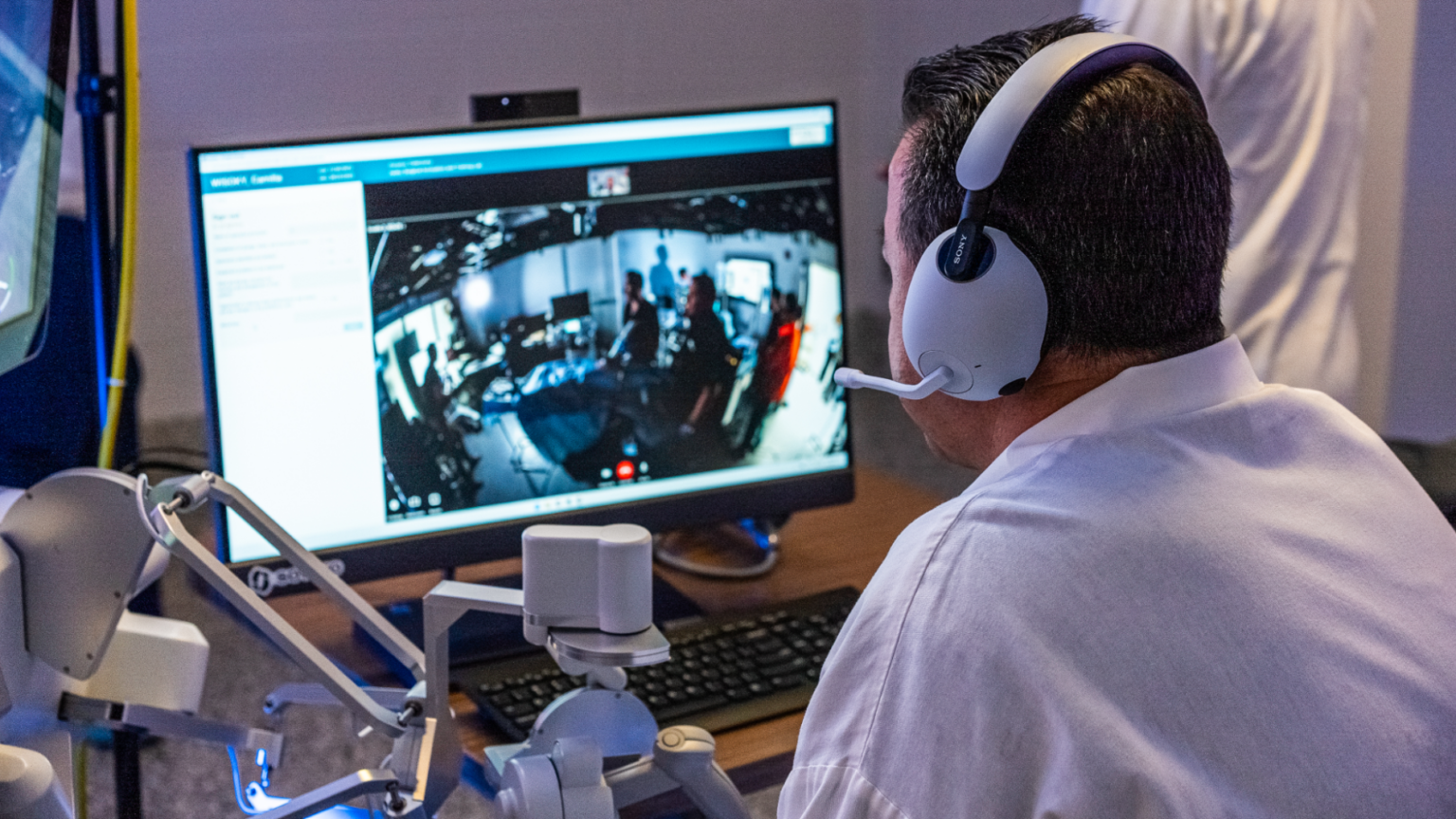Blog
Getting Started with NVIDIA Isaac for Healthcare Using the Telesurgery Workflow

Introduction to NVIDIA Isaac for Healthcare
In the rapidly evolving field of healthcare, technological advancements are playing a pivotal role in improving patient outcomes and operational efficiency. One such groundbreaking innovation is NVIDIA Isaac, a platform designed to revolutionize various healthcare applications, including telesurgery. This article delves into the essentials of utilizing NVIDIA Isaac for healthcare, focusing on the telesurgery workflow.
Understanding NVIDIA Isaac
NVIDIA Isaac is a robust AI platform tailored for the healthcare sector, harnessing the power of robotics, artificial intelligence, and deep learning. This platform enables developers and healthcare professionals to create intelligent robotic systems that can improve surgical precision, enhance patient monitoring, and automate various procedural tasks.
Features of NVIDIA Isaac
The platform provides an array of features essential for the development of healthcare applications:
-
AI Integration: With built-in support for deep learning, Isaac allows for seamless integration of AI models, enhancing decision-making and diagnostic capabilities.
-
Real-Time Processing: The platform is designed for real-time data processing, which is crucial in scenarios like telesurgery where timely actions can significantly affect patient outcomes.
-
Simulation Environment: Isaac includes a simulation environment that enables developers to test and refine their applications before deploying them in real-world settings.
- Modularity: The system is built on a modular architecture, allowing for easy customization and scalability depending on specific healthcare needs.
Telesurgery: A Game-Changer in Remote Healthcare
Telesurgery refers to performing surgical procedures from a distance, enabled by advanced robotic systems and real-time communication technologies. This innovation opens doors to specialized care, especially for patients in remote or underserved areas.
Benefits of Telesurgery
- Access to Expertise: Patients can receive surgical care from world-class specialists without needing to travel long distances.
- Reduced Wait Times: Telesurgery can significantly decrease wait times for surgical procedures, improving overall patient satisfaction.
- Lower Costs: By minimizing travel and accommodating more surgeries through efficient scheduling, telesurgery often leads to lower healthcare costs.
Implementing NVIDIA Isaac in Telesurgery Workflow
To effectively integrate NVIDIA Isaac into the telesurgery workflow, organizations should follow a structured approach. Here’s a step-by-step guide:
1. Define Objectives and Requirements
Start by outlining the specific goals you aim to achieve with the implementation of NVIDIA Isaac in telesurgery. Consider factors like the types of surgeries, technology integration, and desired outcomes for patient care.
2. Build the Team
Form a multidisciplinary team that includes surgeons, engineers, software developers, and healthcare professionals. Collaboration among varied expertise is vital to successfully design and implement the telesurgery system.
3. Develop AI Models
Utilize NVIDIA Isaac’s capabilities to develop AI models tailored for surgical tasks. This can include predictive analytics for patient monitoring and automation algorithms for robotic surgical instruments.
4. Create a Simulation Environment
Before deploying the system in clinical settings, leverage Isaac’s simulation tools to test your designs. This step allows for iterative testing and refinement of algorithms and workflows, ensuring everything operates smoothly.
5. Implementation and Training
Once the system has been refined through simulations, move to the real-world implementation phase. Conduct comprehensive training sessions for the surgical team to familiarize them with the new technology and procedures involved in telesurgery.
6. Continuous Monitoring and Improvement
After deployment, establish a feedback mechanism to monitor operational performance and patient outcomes. Utilize this data to make informed adjustments and continuously improve the telesurgery workflow.
Challenges in Telesurgery
While the potential of telesurgery facilitated by NVIDIA Isaac is vast, certain challenges need to be addressed:
1. Connectivity Issues
Reliable and high-speed internet connectivity is crucial for the success of telesurgery. Interruptions in connectivity can pose risks during procedures, necessitating robust backup systems.
2. Regulatory Compliance
Navigating the regulatory landscape for telehealth and telesurgery can be complex. Ensure that your solution complies with local laws and industry standards, safeguarding patient privacy and safety.
3. Integration with Existing Systems
Integrating new technology into established healthcare systems can be daunting. Ongoing collaboration and testing are essential to ensure that the new workflows mesh seamlessly with traditional practices.
The Future of Telesurgery with NVIDIA Isaac
As NVIDIA Isaac continues to evolve, the possibilities for telesurgery are broadening. Advancements in AI and robotics will pave the way for more sophisticated procedures, potentially reducing the physical limits of surgical interventions.
Potential Innovations
- Enhanced Real-Time Imaging: Future iterations of the platform may incorporate augmented reality, providing surgeons with enriched visual information during procedures.
- Advanced Machine Learning: Future AI models could learn from previous surgeries, continuously improving their performance based on outcomes, further enhancing decision-making capabilities.
Conclusion
The integration of NVIDIA Isaac for healthcare, particularly in telesurgery, represents a frontier in medical innovation. By following a structured approach to implementation and remaining cognizant of potential challenges, healthcare organizations can harness the power of this platform to improve patient care. As technology continues to advance, the future looks promising for telesurgery, potentially reshaping surgical practices around the globe.
